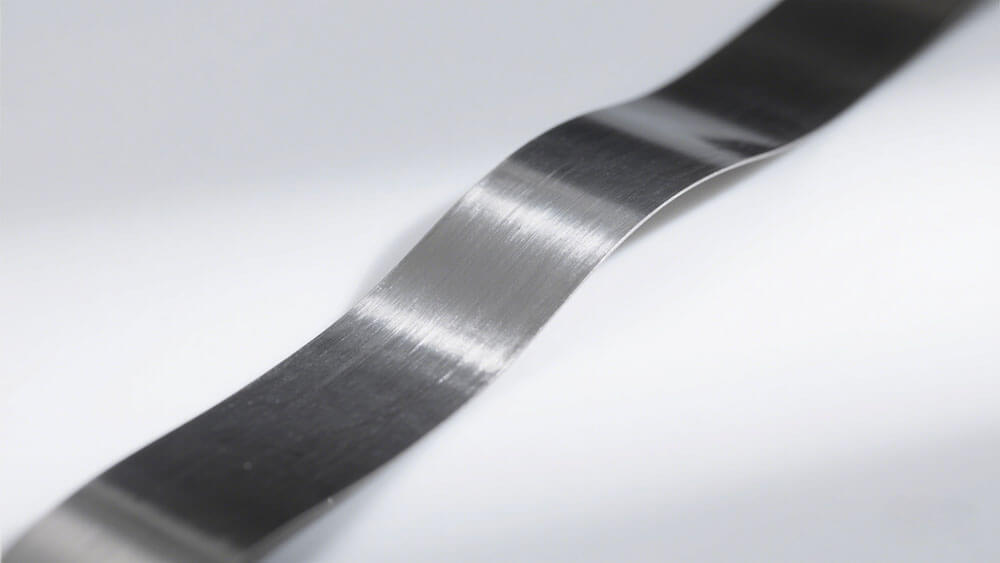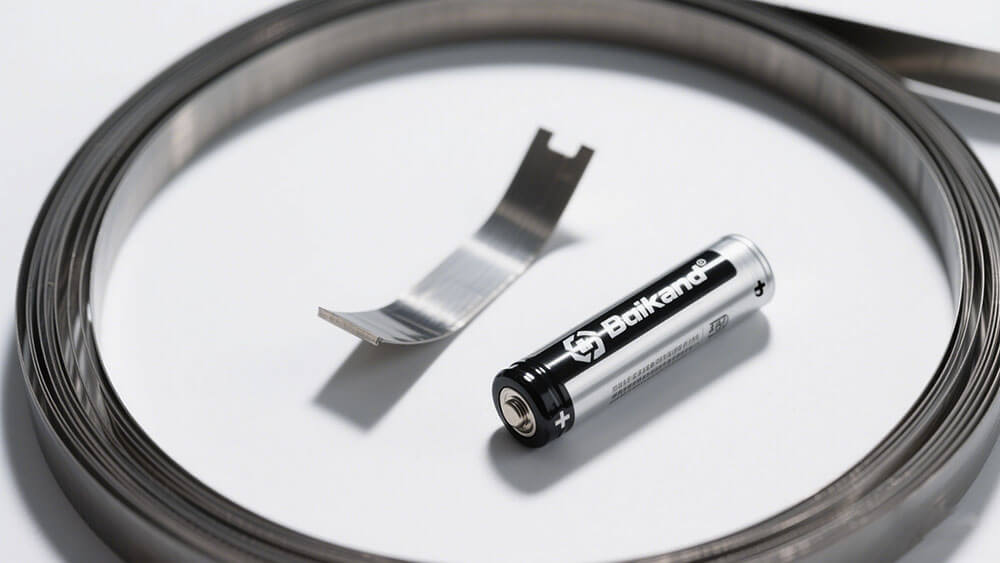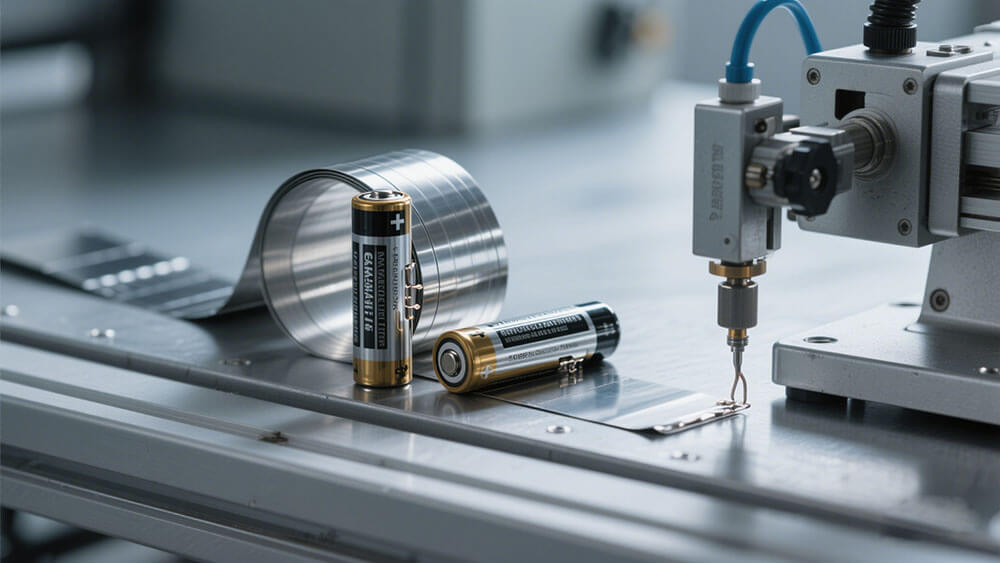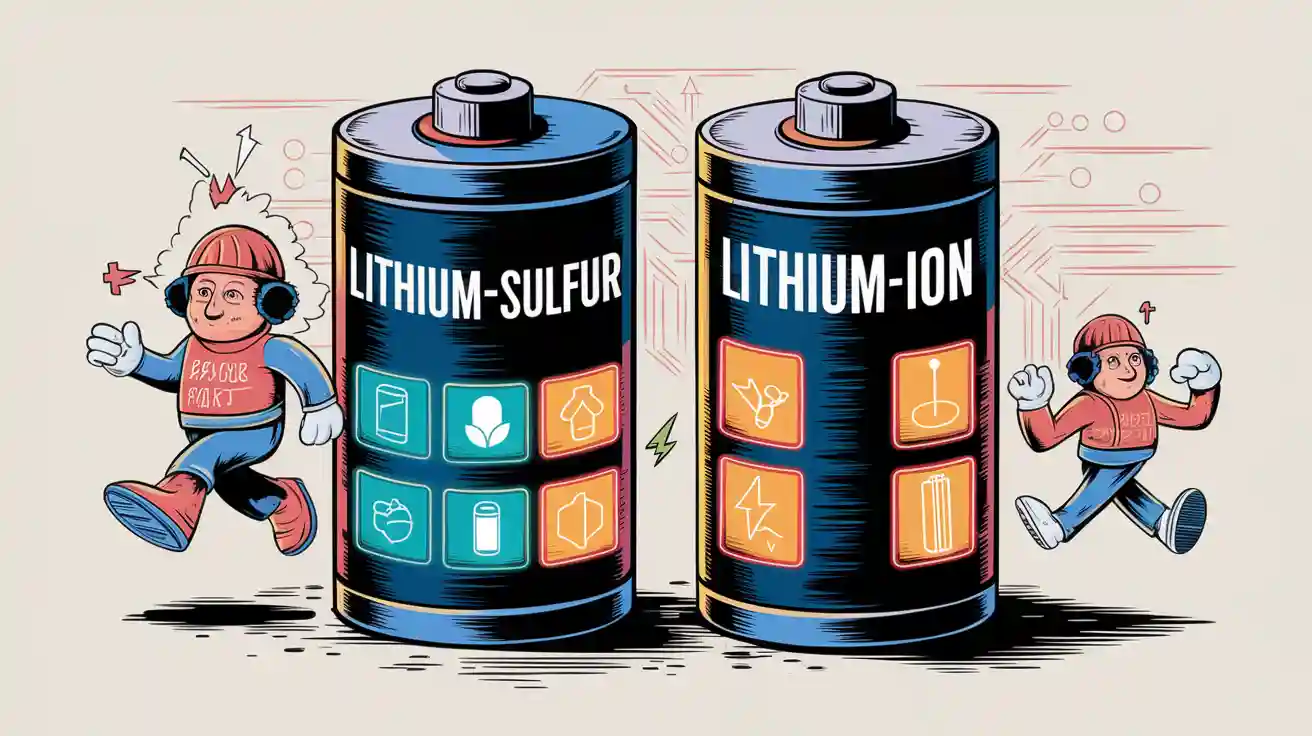Contents

The nickel strip of battery pack plays a crucial role as a conductive connector, providing exceptional electrical conductivity while preserving the structural integrity of the pack. Its importance is particularly evident in high-performance lithium-ion battery applications, where dependable current flow is vital. With the global nickel strip market anticipated to expand at a CAGR of 12% by 2027, the demand for these components continues to rise across various industries.
Key Takeaways
Nickel strips help electricity move well in battery packs. This improves how they work, especially in electric cars and energy storage systems.
Nickel strips resist rust, keeping battery connections safe from damage. This makes them last longer and need less fixing.
Picking the right thickness of nickel strips is important. It balances weight, bending ability, and strength for the best performance.

Part 1: Key Properties of Nickel Strips in Battery Packs
1.1 Conductivity and its impact on battery pack performance
Nickel strips play a pivotal role in ensuring efficient conductivity within battery packs. Their high electrical conductivity facilitates seamless current flow between individual battery cells, which is essential for maintaining optimal performance in lithium-ion battery systems. The ability of nickel strips to minimize resistance directly impacts the energy efficiency and thermal management of the battery pack. This is particularly critical in applications such as electric vehicles and energy storage solutions, where consistent power delivery is non-negotiable.
Moreover, the compatibility of nickel strips with spot welding techniques enhances their integration into battery assemblies. Spot welding ensures robust connections, reducing the risk of electrical losses and improving the overall durability of the battery system. This makes nickel strips indispensable in high-performance applications, including industrial and consumer electronics.
1.2 Corrosion resistance for long-term reliability in battery packs
Corrosion resistance is another critical property of nickel strips, ensuring the long-term reliability of battery packs. Nickel’s inherent resistance to oxidation and chemical degradation protects the connections within the battery pack from environmental factors such as humidity and temperature fluctuations. This durability is vital for applications in harsh environments, including infrastructure and renewable energy systems.
Studies validate the role of nickel plating thickness in enhancing corrosion resistance. The thickness of the nickel coating significantly affects the quality of the weld interface between copper and steel, two common materials in battery connections. A well-maintained nickel layer not only improves weldability but also prevents corrosion, ensuring stable performance over extended periods. This property is particularly beneficial for lithium-ion battery packs, which demand consistent performance throughout their lifecycle.
By incorporating corrosion-resistant nickel strips, manufacturers can reduce maintenance costs and enhance the reliability of their energy storage solutions. This makes nickel strips a preferred choice for applications requiring long-term stability, such as medical devices and security systems.
1.3 Mechanical strength and its role in battery assembly durability
The mechanical strength of nickel strips ensures the structural integrity of battery assemblies. During the assembly process, nickel strips must withstand the mechanical stresses of spot welding and other manufacturing techniques. Their robustness prevents deformation or damage, which could compromise the electrical connections within the battery pack.
Nickel strips also provide stability during the operational life of the battery. They resist wear and tear caused by vibrations, thermal expansion, and mechanical shocks. This durability is crucial for applications in electric vehicles, where battery packs are subjected to dynamic conditions. Additionally, the mechanical strength of nickel strips supports the compact design of modern battery packs, enabling manufacturers to optimize space without sacrificing performance.
The use of pure nickel strips further enhances mechanical strength. Unlike nickel-plated steel strips, pure nickel strips offer superior resistance to cracking and fatigue, making them ideal for demanding applications. Their compatibility with advanced welding techniques ensures secure connections, contributing to the overall reliability and efficiency of the battery system.

Part 2: Types of Nickel Strips and Their Applications in Battery Packs
2.1 Pure nickel strips vs. nickel-plated steel strips: Key differences
When selecting materials for battery packs, understanding the differences between pure nickel strips and nickel-plated steel strips is essential. Pure nickel strips offer superior electrical conductivity, which is critical for maintaining efficient current flow in high-performance battery packs. In contrast, nickel-plated steel strips have significantly higher electrical resistivity—up to 100% more—making them less efficient for energy-intensive applications.
Pure nickel strips also excel in heat resistance. They can handle higher current levels without excessive heating, ensuring optimal efficiency and safety. A simple test can differentiate these materials: polishing a sample and exposing it to salty water. Pure nickel resists corrosion better than nickel-plated steel, making it ideal for long-term use in energy storage solutions.
However, nickel-plated steel strips remain a cost-effective option for applications where conductivity and corrosion resistance are less critical. Their affordability makes them suitable for consumer-grade battery packs.
2.2 Thickness variations and their influence on battery pack design
The thickness of nickel strips plays a pivotal role in battery pack design. Thin strips (less than 0.1mm) are lightweight and suitable for compact designs but may struggle with high current loads. Medium strips (0.1mm to 0.5mm) balance flexibility and durability, making them a popular choice for lithium-ion battery packs. Thick strips (more than 0.5mm) provide exceptional mechanical strength and current-handling capabilities, ideal for industrial applications.
Designers must carefully select the appropriate thickness to optimize performance and ensure compatibility with spot welding techniques. For instance, thicker strips enhance weldability and reduce the risk of electrical losses, contributing to the reliability of energy storage solutions.
2.3 Common configurations of nickel strips in lithium-ion battery packs
Nickel strips in lithium-ion battery packs are configured to maximize efficiency and durability. In the Ocean Bottom Node (OBN) 10.8V Max 23.45Ah battery pack, interconnects are thick (0.15mm) and robustly spot welded, ensuring reliable current flow. This design prioritizes durability, making it suitable for demanding applications like electric vehicles.
In the OBN 10.8V Max 23.45Ah pack, the interconnects are also 0.15mm thick but feature slits that improve current flow during spot welding. These slits enhance weld quality and ensure consistent performance. Machine assembly processes in this configuration further improve precision and reliability.
Such configurations highlight the importance of design in achieving optimal conductivity and structural integrity. By leveraging advanced techniques, manufacturers can create high-performance battery packs tailored to specific needs.

Part 3: Industrial Applications of Nickel Strips in Battery Packs
3.1 Medical device and high-performance battery packs
Nickel strips are indispensable in the production of high-performance battery packs for medical devices. These devices demand exceptional reliability and efficiency, as they often operate in critical environments where failure is not an option. Nickel strips ensure consistent conductivity, enabling seamless current flow between cells. This property is vital for maintaining the performance of lithium-ion battery packs, which power devices such as portable ventilators, infusion pumps, and diagnostic equipment.
The corrosion resistance of nickel strips further enhances their suitability for medical applications. These devices often encounter varying environmental conditions, including humidity and temperature fluctuations. Nickel strips protect the battery connections from degradation, ensuring long-term reliability. Additionally, their compatibility with spot welding techniques allows manufacturers to achieve strong and reliable welds, which are crucial for the durability of medical battery assemblies.
As the demand for advanced medical technology grows, the role of nickel strips in ensuring the efficiency and longevity of battery packs becomes increasingly significant. For more insights into medical battery solutions, explore Large Power’s medical battery applications.
3.2 Security systems and their reliance on nickel strips
Security systems rely heavily on nickel strips to maintain the performance and reliability of their battery packs. These systems, including surveillance cameras, alarm systems, and access control devices, require uninterrupted power to function effectively. Nickel strips provide the necessary conductivity to ensure efficient current flow, minimizing power loss and enhancing the overall performance of the battery.
The corrosion resistance of nickel strips is another critical factor in their application within security systems. These systems often operate in outdoor or harsh environments, where exposure to moisture and temperature changes can compromise battery performance. Nickel strips protect the connections from corrosion, ensuring the longevity of the battery packs.
Characteristic | Benefit |
|---|---|
Corrosion Resistance | Enhances longevity and reliability of battery packs |
Improved Conductivity | Ensures effective current flow and minimizes power loss |
By incorporating nickel strips into their designs, manufacturers can create robust and reliable energy storage solutions for security systems. Learn more about security system battery applications at Large Power’s security solutions.
3.3 Consumer electronics and portable devices powered by battery packs
Nickel strips play a pivotal role in the consumer electronics industry, where they are used in battery manufacturing, connectors, and circuit boards. High-purity nickel strips are particularly valued for their excellent conductivity and resistance to corrosion. These properties make them essential components in devices such as smartphones, laptops, and wearable technology.
The growing demand for portable devices has driven advancements in battery technology, with nickel strips at the forefront of these innovations. Their ability to handle high current loads without excessive heating ensures the safety and efficiency of lithium-ion battery packs. Additionally, their compatibility with spot welding techniques allows manufacturers to create compact and durable battery assemblies, meeting the needs of modern consumer electronics.
As the electronics industry continues to evolve, the importance of nickel strips in ensuring the performance and reliability of battery packs cannot be overstated. For more information on consumer electronics battery solutions, visit Large Power’s consumer electronics applications.
Nickel strips are indispensable in battery packs, offering unmatched conductivity, corrosion resistance, and mechanical strength. These properties ensure reliable performance across industries, from electric vehicles to medical devices.
Key Benefits Across Applications:
Application
Benefits of Nickel Strips
Electric Vehicles (EVs)
Reliable operation of battery packs, handling high currents for performance and safety.
Renewable Energy Systems
Durable and efficient in managing intermittent power generation.
Consumer Electronics
Ensures longevity and performance in portable devices.
Power Tools
Robust connections for high-current applications.
Medical Devices
Reliable power for diagnostic and monitoring equipment.
Custom-engineered nickel strips further enhance battery performance with higher conductivity and tailored dimensions. Their flexibility and formability optimize designs for diverse applications. Explore Large Power’s custom battery solutions to meet your specific needs.
FAQ
1. What makes nickel strips essential for lithium-ion battery packs?
Nickel strips ensure efficient current flow, corrosion resistance, and mechanical strength. These properties enhance the performance, safety, and longevity of lithium-ion battery packs.
2. How do you differentiate pure nickel strips from nickel-plated steel strips?
Pure nickel strips resist corrosion better and offer superior conductivity. A saltwater test can help identify them, as pure nickel remains unaffected by corrosion.
3. Can Large Power provide custom nickel strip solutions for specific applications?
Yes, Large Power offers tailored nickel strip solutions. Explore custom battery solutions to meet your unique requirements.





